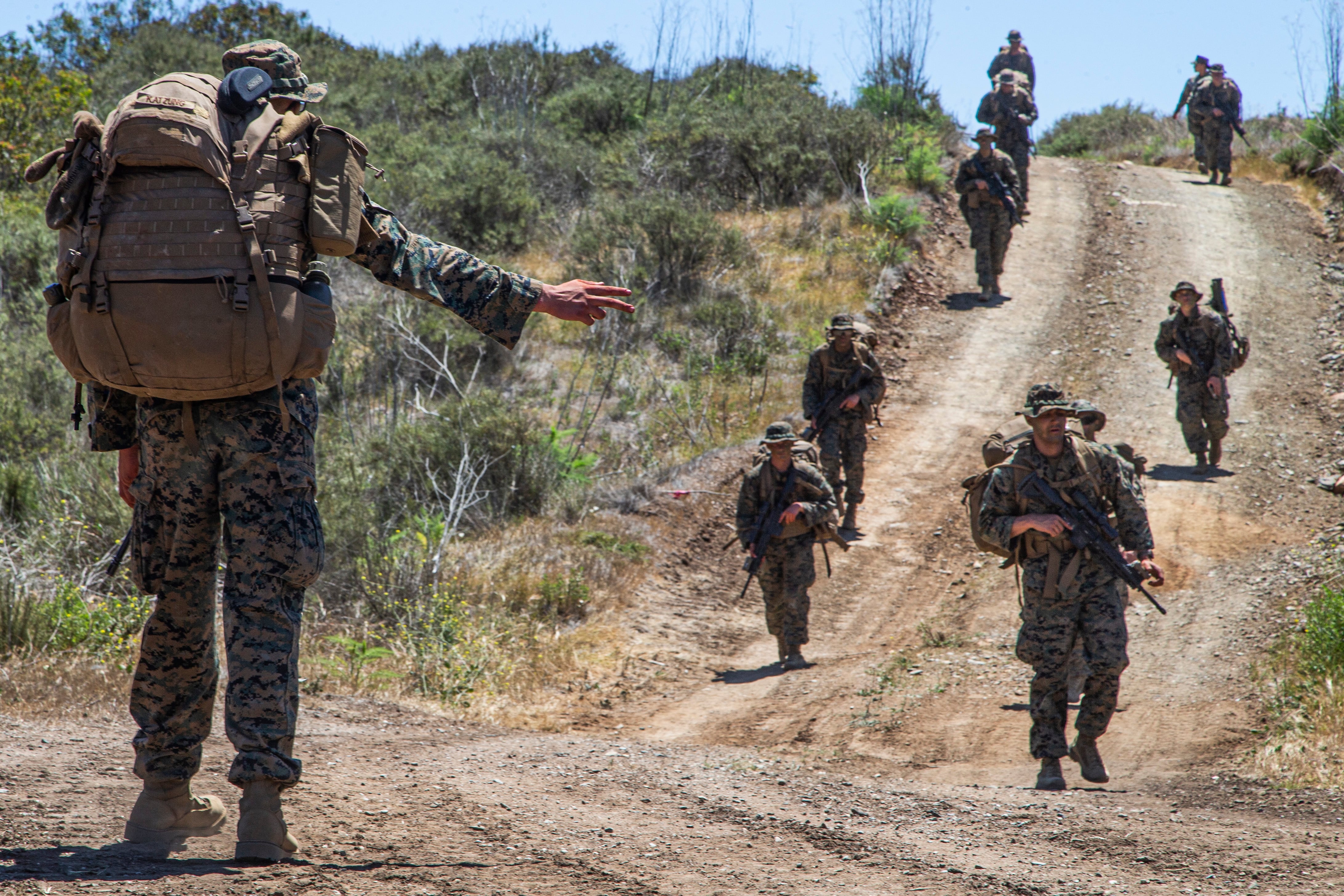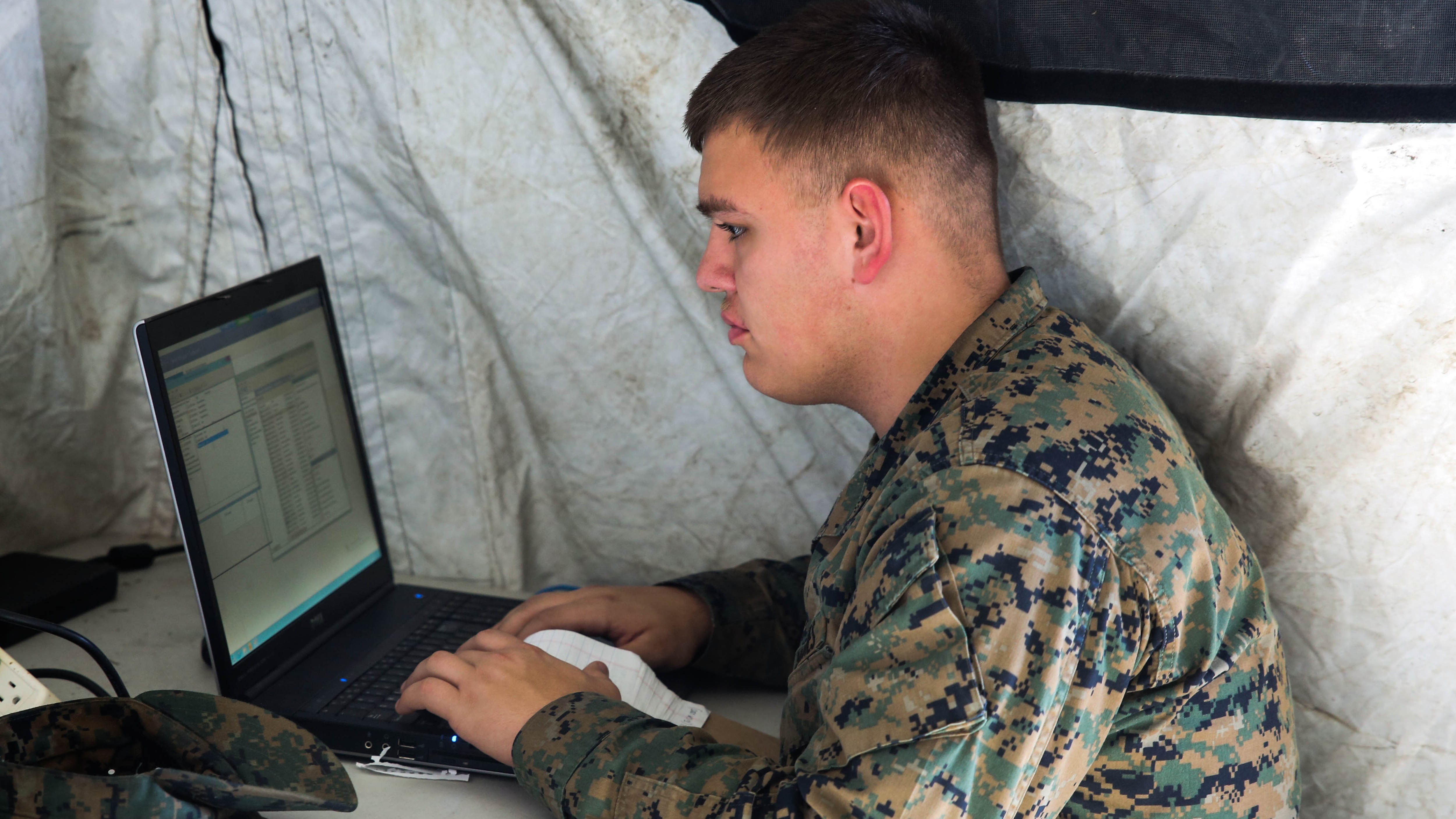The Marine Corps is looking to modernize as it transitions from nearly 20 years of fighting insurgents in the Middle East to taking on near-peer militaries, like China and Russia.
Part of the process has seen the Corps get rid of assets like tanks to reinvest in weapon systems like anti-ship missiles on the MQ-9 Reaper drone.
However, some of the most revolutionary changes the Corps is implementing will soon be seen in the schoolhouse and not the battlefield.
RELATED

The Corps has started to shift from the past “industrial era” education system, based on lectures and rote learning, to a “21st century” model that leverages technology to give students the chance to “take control of their learning,” Amy LaFleur, assistant chief of staff, G-5, studies and analysis, Training Command Headquarters, told Marine Corps Times in an email.
Revamped training
The Marine Corps’ two Schools of Infantry are running pilot programs to test out the new learning style on grunts.
But grunts are not the only ones who will see a revamped schoolhouse.
The Marine Corps’ Training Command has started providing “YouTube” style videos, online flashcards and other innovative learning tools to students heading to schools around the Corps.
In the future, Marines at their military occupational specialty school may be issued a laptop or tablet as they check in that will allow them to learn their craft from day one.
Though the implementation is still in the early phases and the Corps admits it has a lot to learn, it already is seeing a decrease in training waiting times, an increase in test scores and MOS proficiency, and decreased discipline problems in the schoolhouse, a spokesperson for Training Command told Marine Corps Times.
Future Marine pilots with Marine Aviation Training Support Group-21, based out of Pensacola, Florida, now have access to an online prep course that allows them to start tackling some of the most challenging parts of flight school while they are awaiting training.
As a result test scores have gone up, LaFleur said.
The Network Administrators Course at Marine Corps Communication Electronics School has been turned into a self-paced module course where students schedule practical application time, work through modules at their own pace and test out of the course when they are ready.
More than 100 Marines have now graduated early from the course, LaFleur said.
“We found we can cut down the amount time we have people in school because they are self-paced, they can do it in their own time,” Brig. Gen. Jason Morris, the commander of Training Command, told reporters in April.
The Corps has made changes to MarineNet and partnered with Moodle, an online learning platform, to give students access to online learning materials through a standard internet connection and without a government email.
In addition to the online courses the Corps has created online flashcards to help students to study.
The digital flashcards at the Motor Transport Maintenance Instructor Company are adaptable, showing the material the student has gotten wrong more often than the material where the student has shown to be proficient, LaFleur said.
Morris said the Corps is also looking into videos that have instructors walking students through training tasks.
“Maybe instructors upload a YouTube like video on this is how to, and (students) can watch it 50 times, not just, see it once in the classroom and hopefully they got it, but they won’t see it again,” Morris said.
Technology barriers
Not every schoolhouse has wireless internet though, nor are most students currently being issued laptops or tablets to allow them to go online in their leisure time.
“One of the biggest barriers is getting them the technology .… access to the internet and providing the students with a device,” LaFleur said in a phone call.
On the officer side it is not as big of a problem.
Many officers waiting to go to flight school may still have laptops from college and have greater access to the internet in their barracks, LaFleur said in a phone call.
On the enlisted side it is a bit more complicated.
The Corps is working on issuing laptops to students at the communications schoolhouse, while also being flexible with allowing them to have access to the on base resource center where public computers are available.
Some students do have their own laptops and are allowed to use them for the course, LaFleur said.
Training Command is working to “provide commercial wireless internet service and devices to all of the formal schools so all Marines can benefit from 24/7 access to learning content,” LaFleur said in an email.
In addition to the additional resources provided to the students, Training Command is developing a system for instructors to “share and document best practices and report results and impacts realized over time,” LaFleur said.
Eventually those best practices will be used to revamp the curriculum at the Train the Trainer School to the Center for Faculty and Leadership Development, to create instructors better prepared to teach the 21st century learning model.
Ultimately the Corps is leaning on the new learning style in the hopes it creates a Marie more capable of facing off against a near-peer threat.
Training Command, “is creating learner-centric environments because it is the best way for adults to learn,” LaFleur said.
“While there are additional benefits to reduction in MAT (Marines awaiting training) and overall time to train, the most valuable benefit is a more capable, decisive and confident Marine ― ready for the challenges of the future force.”




